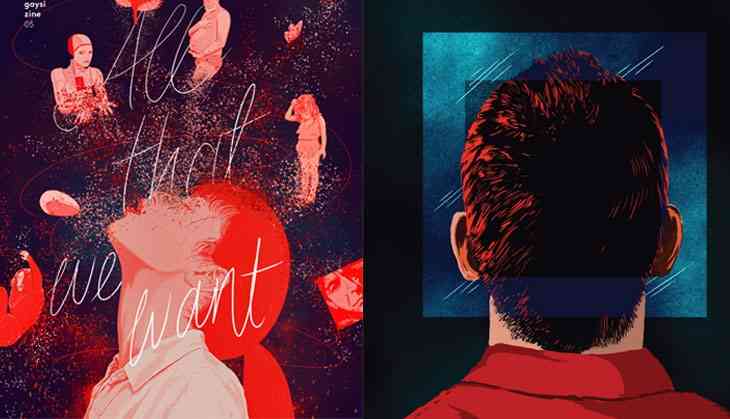
Resist, desire and write/create.
Literature and art is one way forward for the Lesbian, Gay, Genderqueer, Bisexual, Trans, Queer, Questioning, Intersex, Asexual (and Agender), Ally, Pansexual, Polysexual and Kink – abbreviated to LGGBTQQIAAPPK – those criminalised, those ostracised and those hiding behind veils.
Five years and counting, Gaysi Zine has been bringing them out of obscurity and into their realms of desire. The latest issue of the zine deals with the idea 'that what or whom we desire is more than just about sex and sensuality'.
Through stories, both fiction and non-fiction, memoirs, photo essays, poetry and how-to instruction manuals, The Gaysi Zine 05, takes you to a world where passion and pleasure are not just words, but heavy, molasses-thick sensations in your mouth and on your fingertips. Page after page, the words become deliciously tangible, till, after a point, you are no longer reading, you are feeling it.
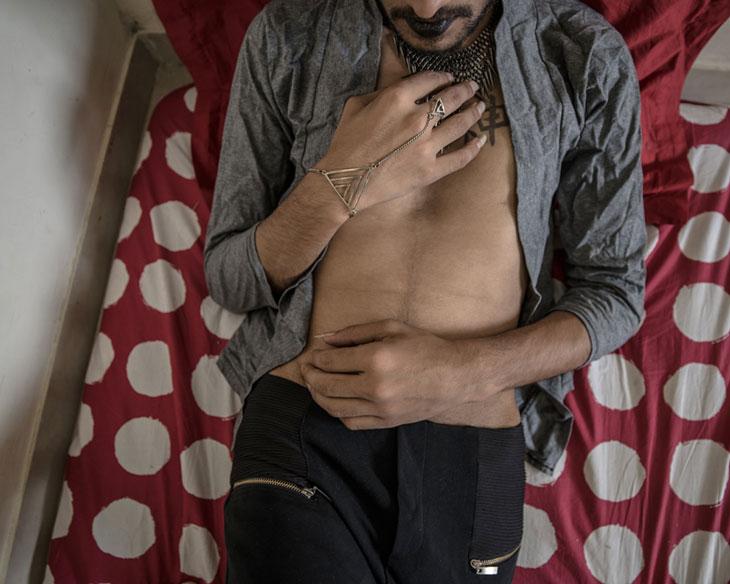
From Dhrubo Jyoti's Never Lost, Never Found, Rosalyn D'Mello's Cities of the Interior, to Alaric Moras' In Times of Trouble, stories come full circle as desires and pleasures are laid out.
It is hard to pick favourites, but Writing Desire (Parvati Sharma), In Search of Babylon: Technology, Desire, and the Fantasy of the Good Life (Brian Horton), Alone but not lonely (Akhila Krishnan) and The sounds of our lives (Benjamin Zachariah) were my little highs.
Of course, you absolutely need to get a copy for yourself, but, before that, here's a little chat we had with Priya Gangwani and Karishma Dorai, the two ladies who curated the 5th edition for your pleasure. In it, they talk about where it all began and what's next. Here are excerpts:
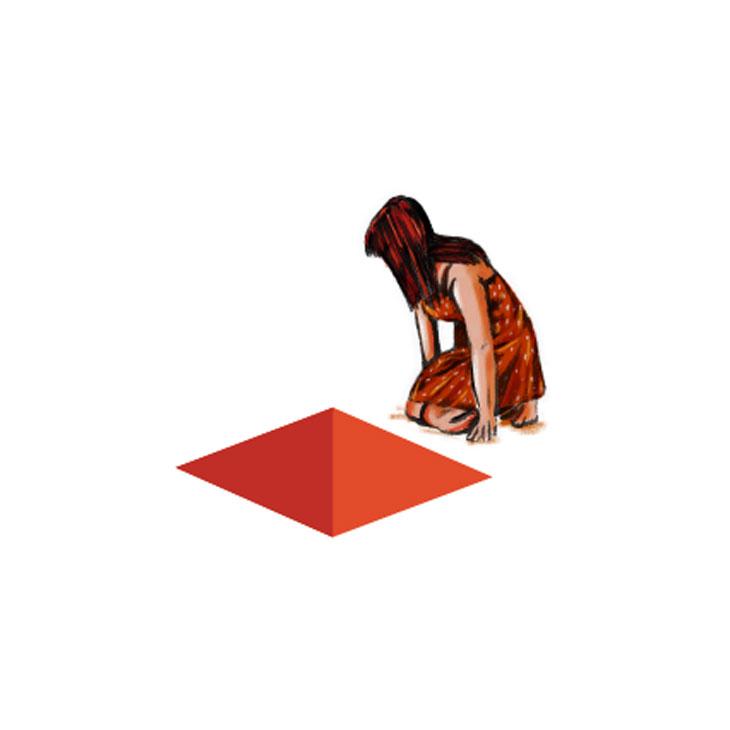
Jhinuk Sen (JS): How did Gaysi Zine come to be?
Gaysi Zine (GZ): The zine started with a rather simple idea – to bring queer stories to as many corners of the country as possible, and to make them endure and surpass the immediacy of the digital medium. The zine was born with the intent of creating a point of reference for our collective progress - a documentation of our experiences, desires, journeys and creative expressions. Started in 2011, we are now an annual zine that is five years old.
JS: What was the initial plan when the first edition was conceptualised and how far has it come since?
GZ: At the very start, we weren’t entirely sure what to expect or what form the zine would take over time. The first issue was a pocket-sized edition that was printed on our own and sent to friends across the world, along with small showcases at our events. People latched on to the idea and loved the stories and started asking a rather natural question – when is the next issue coming out? That’s when we decided to take it forward and haven’t looked back since.
Now when we look back after five issues, we see a map of a growing queer conscience through a printed journal, where various voices have reflected, introspected, observed and narrated with us, in and around the queer realm. In both visual and written forms, the zine has evolved with every issue, and it is noticeable when they’re read in succession. More voices reach out to us ever year, and deeper narratives emerge with every issue. Somewhere, we’d like to think that the zine, in a way, helps us look further within ourselves, becoming a timeline of sorts of our country’s queer evolution.
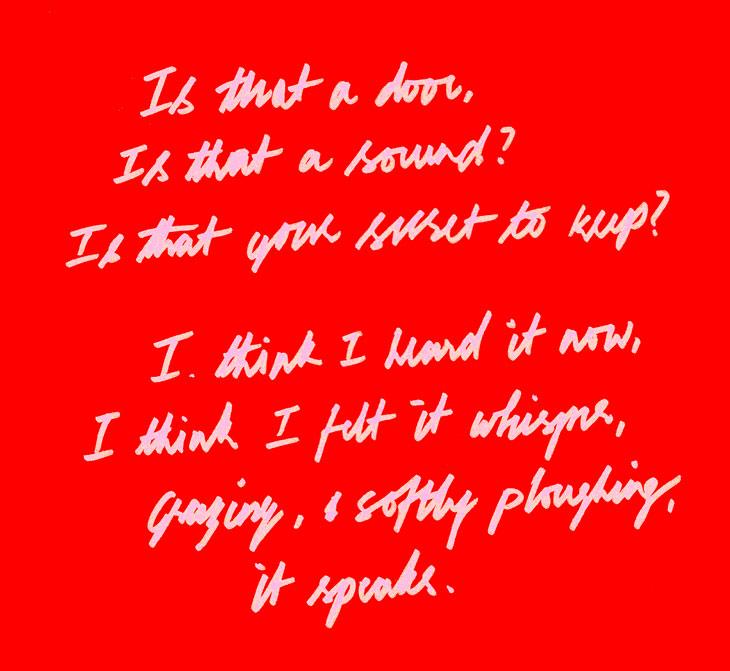
JS: How difficult is it to put together an issue and what are the main problems that you face?
GZ: The zine is put together by just four of us, where Priya Gangwani takes care of content, Karishma Dorai takes care of design, Anuja Parikh and Sakshi take care of marketing, promotion, sales and events.While we work as a team, we are individually responsible for our roles and it becomes a very hands-on process. Since most of us have day jobs, we do this with stolen time spread over the course of a year. Our circulation is relatively smaller in comparison to mainstream magazines and even other popular indie magazines and hence, it becomes harder for us to get people to give us their time for pieces that make the issue. Luckily, both readers and contributors have been increasingly and wonderfully supportive of this endeavor, and that makes it a little more easier, every time.
While we work as a team, we are individually responsible for our roles and it becomes a very hands-on process. Since most of us have day jobs, we do this with stolen time spread over the course of a year. Our circulation is relatively smaller in comparison to mainstream magazines and even other popular indie magazines and hence, it becomes harder for us to get people to give us their time for pieces that make the issue. Luckily, both readers and contributors have been increasingly and wonderfully supportive of this endeavor, and that makes it a little more easier, every time.
Our circulation is relatively smaller in comparison to mainstream magazines and even other popular indie magazines and hence, it becomes harder for us to get people to give us their time for pieces that make the issue. Luckily, both readers and contributors have been increasingly and wonderfully supportive of this endeavor, and that makes it a little more easier, every time.
Our circulation is relatively smaller in comparison to mainstream magazines and even other popular indie magazines and hence, it becomes harder for us to get people to give us their time for pieces that make the issue. Luckily, both readers and contributors have been increasingly and wonderfully supportive of this endeavor, and that makes it a little more easier, every time.
The other main challenge that we face is the printing process itself. With the proliferation of digital, we believe that print is and will be the only way of recording stories in a manner that isn’t lost in a sea of information. However, because of that very same proliferation, print as a medium becomes more expensive, challenging our budgets and timelines every single time. Again, thanks to the availability of crowd-funding platforms like Milaap, generous sponsors like
However, because of that very same proliferation, print as a medium becomes more expensive, challenging our budgets and timelines every single time. Again, thanks to the availability of crowd-funding platforms like Milaap, generous sponsors like Guptt, fantastic printing vendors and the support of long-time loyalists and curious newcomers, the zine comes to fruition every year.
JS: Is there a particular medium of expression that you prefer over other visual ones when it comes to Gaysi Zine?
GZ: Not really, as it is the amalgamation of various forms of expression that really adds to the soul of the zine. While it started out with over 90% of written pieces, the zine has now grown to equally include prose, illustrations, graphic narratives, design, photography, poetry, and non-fiction, among others.
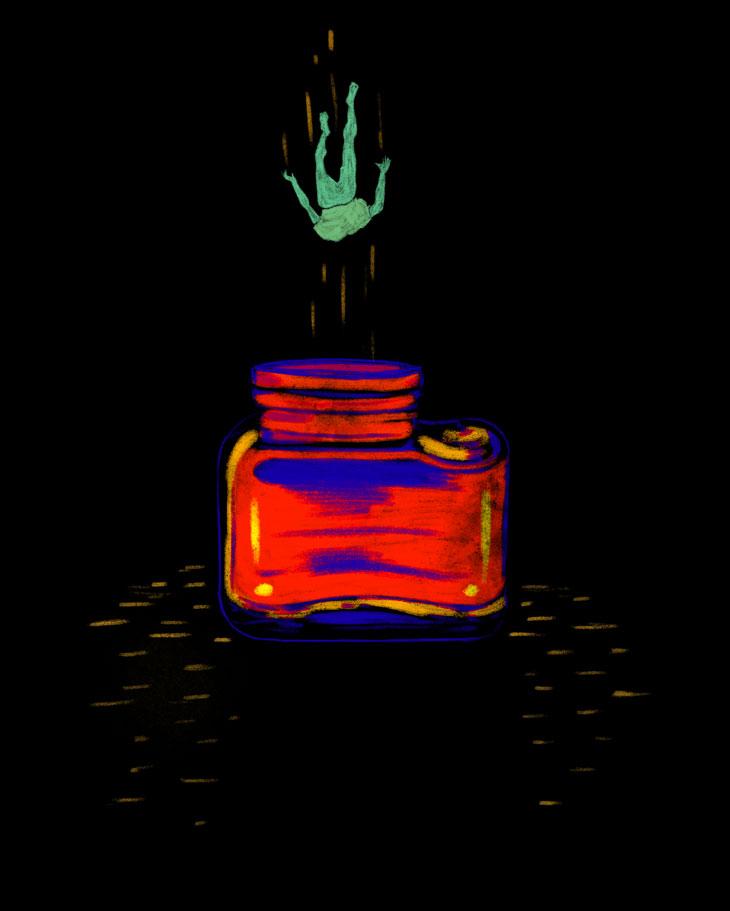
JS: How do you guys plan to take Gaysi Zine to the next level?
GZ: We are in the works of trying to find more permanent solutions to our production process and pushing the envelope when it comes to the content and design with every single issue. We’re working towards exploring never-before narratives and perspectives that helps us all read and wonder how we missed that, or how we hadn’t heard of that before.
The zine is a work-in-progress, and every issue is a next level in its own way, opening previously unopened doors for both readers and contributors.
Alongside, Anuja and Sakshi work very hard every year to figure more places for us to retail at and more corners across the world for the zine to discover. However, we hope that within our country, the zine, one day, reaches every single queer person, whether questioning or self-aware, hearing and reflecting upon their stories through ours. Their journey through the zine really, is our next level.

S: How do you want Gaysi Zine to work as you send out the 5th issue?
GZ: The zine is meant to be a shared experience, where we hope that readers will pass them on to people who haven’t heard of it before, like a discovery of unheard stories, of voices that appeal to intimate parts of you. We hope that the zine works as a tool for self-discovery, as a balm for deep questions, and most importantly, as a record of our collective experiences as LGBTQIAPK+ people.
You can buy this edition of Gaysi Zine here.




